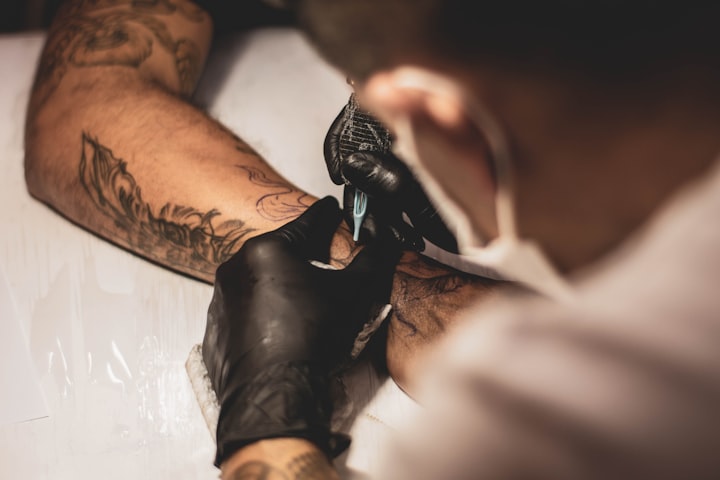
Tattoos can hold a wide range of meanings, depending on the individual and the culture. Here's a breakdown of some common reasons people get tattoos:
• Self-expression: Tattoos can be a way to showcase your personality, interests, beliefs, or values.
• Commemoration: People often get tattoos to memorialize loved ones, significant events, or milestones in life.
• Symbolism: Certain symbols or imagery can hold cultural or personal significance.
• Art and Aesthetics: Many people simply appreciate tattoos as a beautiful art form and enjoy having them on their bodies.
In some cultures, tattoos can also hold deeper meanings:
• Social status: In some societies, tattoos indicate social rank, affiliation with a tribe, or accomplishments.
• Religious significance: Tattoos can be used for religious devotion or serve as protective symbols.
Tattoos boast a rich and long history that stretches back millennia. Here's a glimpse into some of the important milestones:
• Ancient Origins (Up to 3300 BC): Evidence suggests tattooing might have been practiced as early as the Upper Paleolithic period in Europe. The oldest discovery of tattooed skin dates back to Ötzi the Iceman, a mummy from around 3370-3100 BC.
• Global Presence (From 4th Millennium BC onwards): Mummies from various cultures like Siberia, China, and Polynesia showcase the widespread practice of tattooing. These tattoos served diverse purposes, including religious symbolism, social status markers, protection, and adornment.
• East vs. West (Ancient Greece and Rome onwards): In the West (Greece and Rome), tattoos were often associated with criminals and slaves. However, other parts of the world, like Japan, continued to have rich tattoo traditions linked to social status and spiritual beliefs.
• Exploration and Exchange (18th Century onwards): European explorers encountered tattooing in Polynesia, and the term "tattoo" comes from the Tahitian word "tatatau." This reintroduced the practice to the West, particularly among sailors who adopted it as a souvenir of their travels.
• Modern Evolution (20th and 21st Centuries): Tattoos gained wider acceptance in the 20th century, though with fluctuations in popularity. Today, tattooing is a global phenomenon with diverse styles and meanings, seen as a form of self-expression and body art.
• Gender Disparity: Surveys suggest women might be getting tattooed more than men. For instance, a 2020 research article cited statistics showing 38% of women and 27% of men in the US have at least one tattoo.
• Age Trends: Younger generations tend to have higher tattoo rates.

"Did ancient mummies have tattoos? "
Yes, tattoos have been found on mummies from various cultures around the world, revealing a surprisingly long history of this art form! Here's a breakdown:
• Ancient Egyptians: Evidence suggests tattooing in Egypt dates back to at least 2000 BC. While not as common as in other cultures, some mummies, particularly women, have been found with tattoos. These tattoos often depicted deities, geometric patterns, or symbols associated with fertility and protection.
• Siberian Cultures: The Pazyryk burials in Siberia, dating back to around 5th-3rd century BC, have yielded mummies with elaborate tattoos depicting animals, geometric designs, and even mythological creatures. These tattoos are believed to have served various purposes, including social status markers, protection, and religious significance.
• Indigenous Americas: Mummies from South America, particularly the Chinchorro mummies from Chile (dating back to 5000 BC) and the Inca mummies of Peru, show evidence of facial tattoos. These likely held cultural or religious significance.
• Other Cultures: Evidence of tattoos on mummies has also been found in Southeast Asia, the Philippines, and Oceania, indicating a widespread practice across various civilizations.
The discovery of tattoos on mummies offers valuable insights into the cultural practices and beliefs of these ancient societies. It highlights how tattooing served not just as decoration but also held deeper meaning and purpose.
About the Creator
sanjeevan
I'm a blogger and knowledge about blogging is a valuable asset in today's digital world. Blogging is a powerful way to share your voice and expertise, build a following, and establish yourself as a thought leader in industry.





Comments (2)
Wow! It is a madness.
Very interesting! Great work!!!